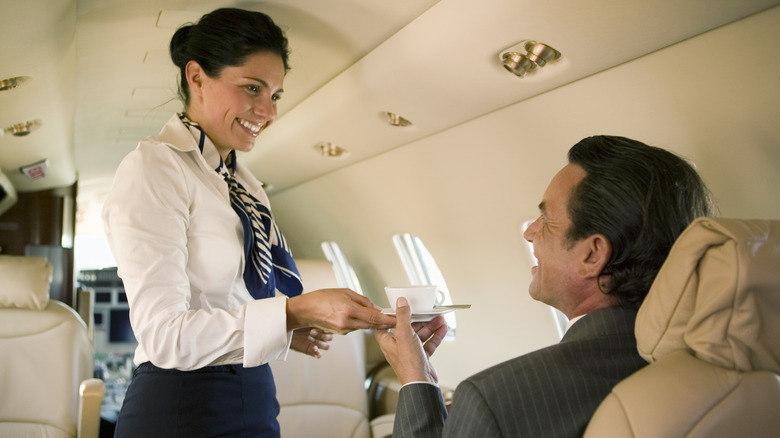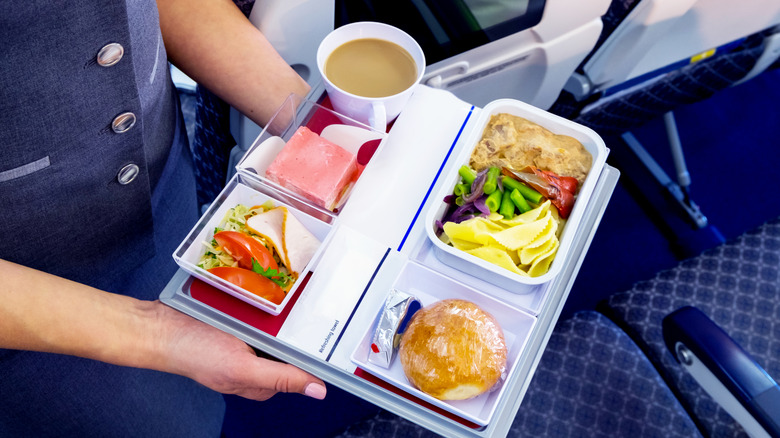The Reason Airplane Food Tastes Different, According To Science
What's the deal with airline food? Sure, that's a joke, but it's also not: What exactly is the deal with airplane food anyway? You're paying a pretty outrageous amount for a can of ginger ale and a bag of chips, or else you're stuck bringing your own food from home or an overpriced airport restaurant. Were airlines always serving up tiny bags of pretzels to fliers back in the day? Why does the food on airplanes get such an unpleasant reputation?
For those too young to remember, an in-flight meal used to be a drastically different affair. If you were to fly during, say, the 1950s, you had an impressive selection of meals you could choose from. You could enjoy fresh fruit and salads or a hot roast beef dinner on fine china alongside a bouquet of fresh flowers (via Travel and Leisure). But as more people began to fly, The Atlantic notes it became more expensive to serve such hot luxurious dinners. Plus, with the addition of in-flight TVs and internet access, the distraction of enjoying a good hot meal was no longer as important on a long flight.
Yet, what made those fancy in-flight dinners so delicious? Why is it that nowadays everything from a cup of coffee to a sweet treat tastes bland? The problem isn't with your food, but rather the high altitude.
Flying high doesn't mean elevated flavors
As your plane begins to ascend higher, you may start to feel a routine case of airsickness. While you'll certainly feel the waves of nausea, there's actually other natural responses occurring you won't be able to feel. According to The Atlantic, as the aircraft ascends to 35,000 feet, the cabin begins to pressurize to help you breathe better. As this happens, your taste buds become numb, which is why you may find your in-flight food and drink rather bland. Older planes, The Atlantic explains, didn't fly so high, so no pressurization was needed. Thus, passengers could taste their food just as strongly as they would on the ground.
The Fraunhofer Institute, a German research organization, performed a study on atmospheric pressure and human taste in 2011. Using a model of an Airbus cabin suspended inside a low-pressure chamber, researchers could alter temperature, humidity, and pressure to simulate changing effects on an aircraft. They discovered that, in order for a subject to taste their food, stronger stimulus such as spices and seasonings are needed. Fortunately, this is exactly what airline chefs are trying to do. Airline chefs are seasoning their food considerably more than at a normal restaurant on the ground, using spices such as cardamom, lemongrass, and curry for a more intense and noticeable taste (via BBC).
Although your dinner may not be as delicious in the air as it is on the ground, you can at least get to eat with a view.

